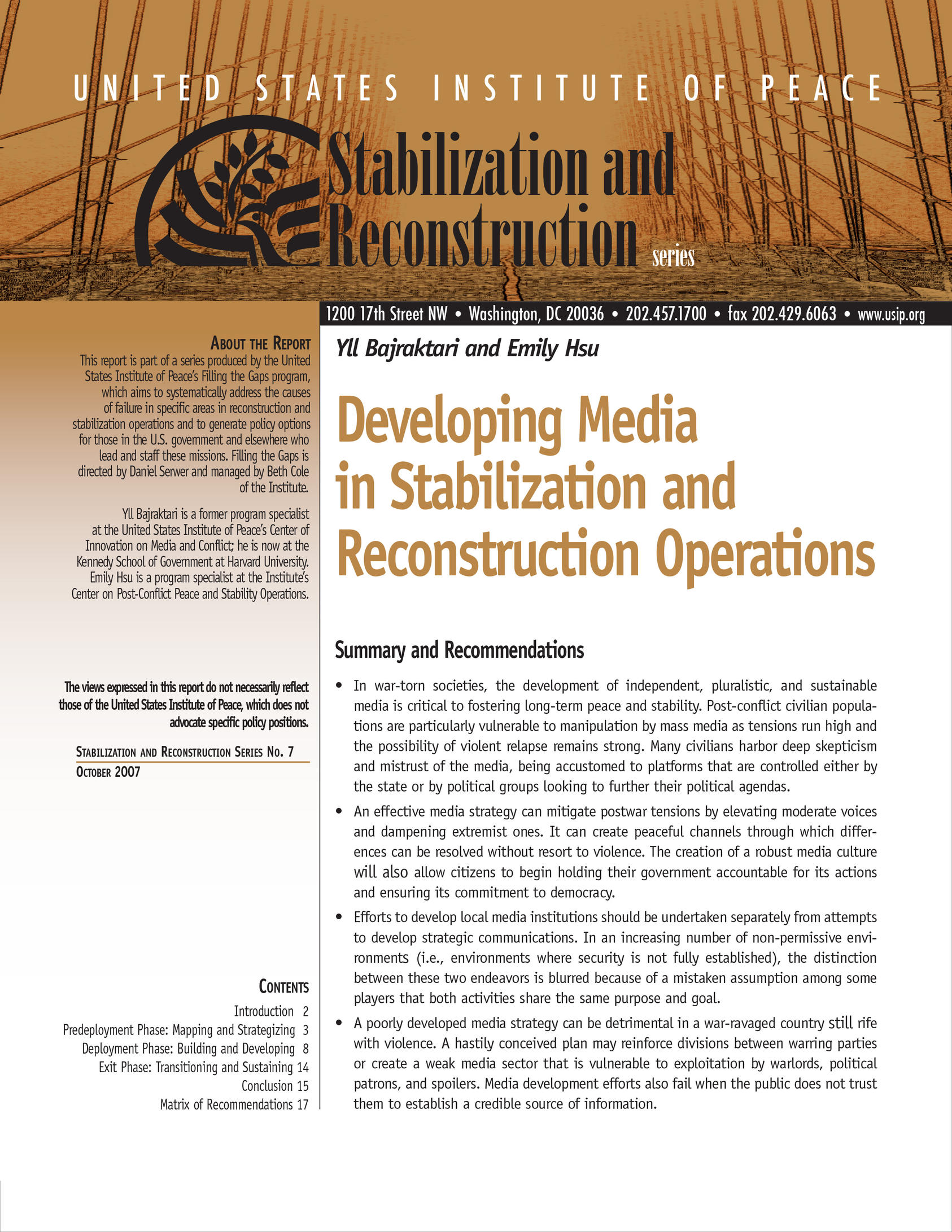In war-torn societies, the development of independent, pluralistic, and sustainable media is critical to fostering long-term peace and stability. This report outlines a series of steps for generating a strategy for media development in post-conflict zones.

Summary
- In war-torn societies, the development of independent, pluralistic, and sustainable media is critical to fostering long-term peace and stability. Post-conflict civilian populations are particularly vulnerable to manipulation by mass media as tensions run high and the possibility of violent relapse remains strong. Many civilians harbor deep skepticism and mistrust of the media, being accustomed to platforms that are controlled either by the state or by political groups looking to further their political agendas.
- An effective media strategy can mitigate postwar tensions by elevating moderate voices and dampening extremist ones. It can create peaceful channels through which differences can be resolved without resort to violence. The creation of a robust media culture will also allow citizens to begin holding their government accountable for its actions and ensuring its commitment to democracy.
- Efforts to develop local media institutions should be undertaken separately from attempts to develop strategic communications. In an increasing number of non-permissive environments (i.e., environments where security is not fully established), the distinction between these two endeavors is blurred because of a mistaken assumption among some players that both activities share the same purpose and goal.
- A poorly developed media strategy can be detrimental in a war-ravaged country still rife with violence. A hastily conceived plan may reinforce divisions between warring parties or create a weak media sector that is vulnerable to exploitation by warlords, political patrons, and spoilers. Media development efforts also fail when the public does not trust them to establish a credible source of information.
- Ideally, given the media’s capacity to shape war-torn countries, interveners should apply a coherent strategy in the pursuit of media development. Unfortunately, no such strategy yet exists and thus interveners have little guidance as to what tools and methods work best in the development of media institutions. In fact, media development is still conducted on an ad hoc basis from conflict to conflict.
- This report seeks to fill this strategic gap. More particularly, it recommends that interveners take the following series of steps as they generate a strategy for media development in post-conflict zones.
About the Report
This report is part of a series produced by the United States Institute of Peace’s Filling the Gaps program, which aims to systematically address the causes of failure in specific areas in reconstruction and stabilization operations and to generate policy options for those in the U.S. government and elsewhere who lead and staff these missions. Filling the Gaps is directed by Daniel Serwer and managed by Beth Cole of the Institute.
Yll Bajraktari is a former program specialist at the United States Institute of Peace’s Center of Innovation on Media and Conflict; he is now at the Kennedy School of Government at Harvard University. Emily Hsu is a program specialist at the Institute’s Center for Post-Conflict Peace and Stability Operations.